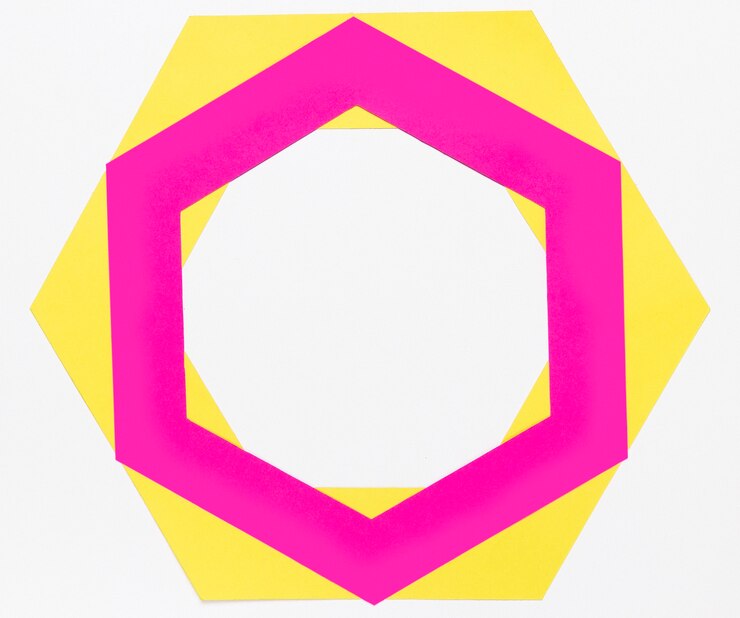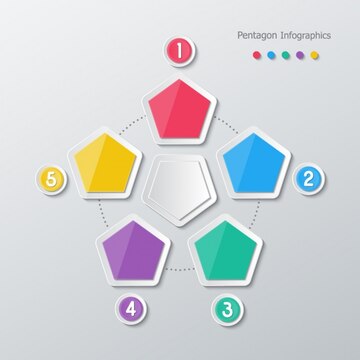In the world of geometry, shapes are more than mere figures; they represent a blend of mathematical precision, aesthetic appeal, and practical applications. One shape that stands out for its unique properties and visual intrigue is the pentagon. Designated here as shape:yl6axe4-ozq= pentagon, the pentagon holds a special place in both mathematics and art. In this article, we will explore the characteristics, history, applications, and cultural significance of the pentagon, revealing why it continues to captivate our imagination.
Understanding the Pentagon: A Geometric Overview
Definition and Properties
A pentagon is a five-sided polygon characterized by its five edges and five vertices. The term “pentagon” comes from the Greek words “pente,” meaning five, and “gonia,” meaning angle. Here are some key properties of the pentagon:
- Angles: The sum of the interior angles of a pentagon is 540 degrees. Each interior angle of a regular pentagon (where all sides and angles are equal) measures 108 degrees.
- Sides: A pentagon has five sides. These can be of equal length in a regular pentagon or of varying lengths in an irregular pentagon.
- Diagonals: A pentagon can be divided into triangles by drawing diagonals from one vertex to the others. Specifically, a pentagon has five diagonals.
- Symmetry: A regular pentagon exhibits rotational symmetry of order 5, meaning it can be rotated about its center by angles of 72 degrees without changing its appearance.
Types of Pentagons
There are two primary types of pentagons:
- Regular Pentagons: All sides and angles are equal, resulting in a uniform shape. Regular pentagons are often found in nature and architecture, symbolizing harmony and balance.
- Irregular Pentagons: These have sides and angles that are not necessarily equal. Irregular pentagons can take on various forms and are commonly encountered in various practical applications.
The Mathematical Significance of the Pentagon
Area and Perimeter Calculations
Understanding the area and perimeter of a pentagon is crucial in various fields, from architecture to landscaping. The formulas for calculating these are as follows:
- Perimeter (P): The perimeter of a pentagon is simply the sum of the lengths of its sides.P=a+b+c+d+eP = a + b + c + d + eP=a+b+c+d+ewhere a,b,c,d,ea, b, c, d, ea,b,c,d,e are the lengths of the sides.
- Area (A): For a regular pentagon, the area can be calculated using the formula:A=145(5+25)⋅s2A = \frac{1}{4} \sqrt{5(5 + 2\sqrt{5})} \cdot s^2A=415(5+25)⋅s2where sss is the length of a side. For irregular pentagons, the area may require more complex calculations, often breaking the shape into triangles.
The Golden Ratio
The regular pentagon is closely associated with the Golden Ratio, an irrational number approximately equal to 1.618. This ratio is aesthetically pleasing and appears frequently in art, architecture, and nature. In a regular pentagon, the ratio of the length of a diagonal to a side approaches the Golden Ratio, adding to its allure and mathematical beauty.
Cultural Significance of the Pentagon
Historical Context
The pentagon has been known since ancient times and is often associated with various cultural symbols. The Greeks studied pentagons extensively, integrating them into their architectural designs and artistic expressions. The pentagon’s unique shape and properties have inspired mathematicians, artists, and architects for centuries.
Symbolism and Usage
- Architecture: The Pentagon building in Arlington, Virginia, is perhaps the most famous example of a pentagonal structure. Serving as the headquarters of the United States Department of Defense, it symbolizes military strength and national security.
- Art: The pentagon’s symmetry and proportions have made it a favorite subject for artists. Its connection to the Golden Ratio lends it a sense of beauty that has been explored in various artistic movements.
- Spirituality and Mysticism: In some cultures, the pentagon symbolizes the five elements—earth, water, fire, air, and spirit—representing balance and harmony within the universe.
Practical Applications of the Pentagon
Architecture and Design
The pentagon’s unique shape lends itself well to architectural designs, allowing for innovative and functional structures. Its geometric properties make it ideal for creating spaces that are both visually appealing and structurally sound.
Urban Planning
In urban design, pentagonal shapes can be found in park layouts, building designs, and community spaces. The pentagon’s efficiency in space usage and aesthetic appeal makes it a popular choice for planners.
Art and Crafts
Artists often use pentagonal shapes in their work to explore symmetry and balance. Craft projects, from origami to sculpture, frequently incorporate pentagons, showcasing their versatility.

The Pentagon in Nature
The pentagon is not just a man-made construct; it also appears in nature. Many flowers, such as the iconic five-petaled star flower, exhibit pentagonal symmetry. The arrangement of leaves and branches in certain plants also reflects pentagonal patterns, illustrating the beauty of this shape in the natural world.
Conclusion
The pentagon, or shape:yl6axe4-ozq= pentagon, is a fascinating geometric figure that combines mathematical elegance with aesthetic appeal. Its properties, cultural significance, and practical applications make it a vital shape in various fields, from architecture to art.
Whether viewed through the lens of mathematics, history, or nature, the pentagon continues to captivate and inspire. As we explore the world of shapes, the pentagon stands out not just for its five sides but for the deeper meanings and connections it represents in our lives. Embracing the pentagon allows us to appreciate the beauty of geometry and the intricate relationships between form, function, and culture.


